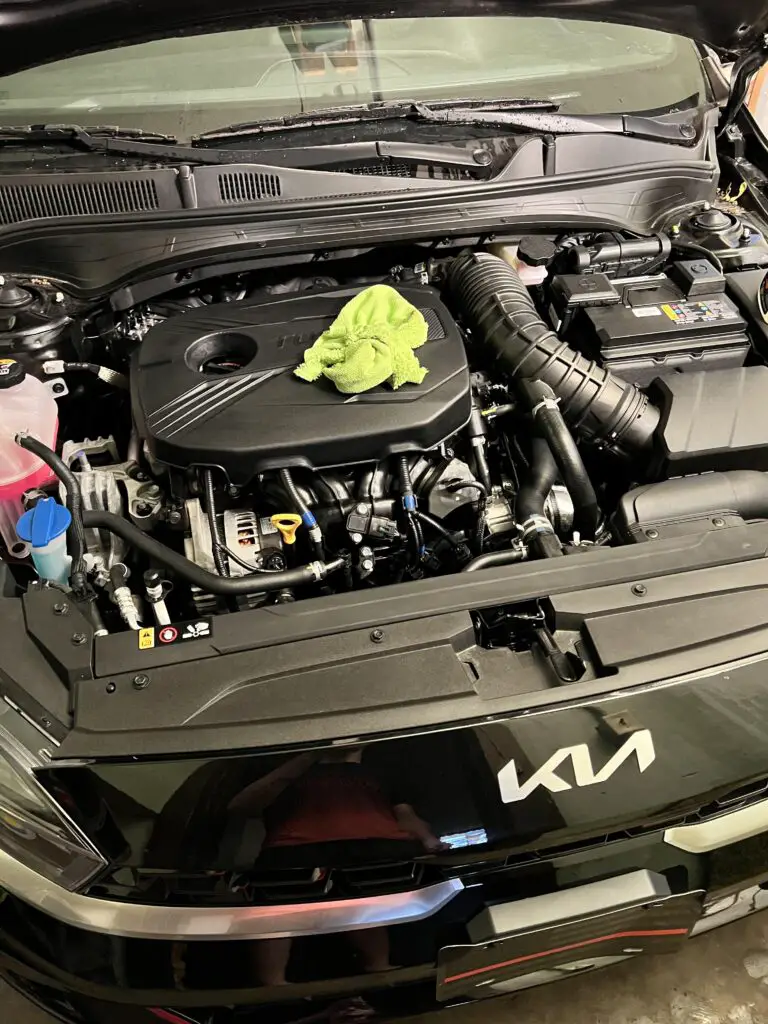The Kia K5, formerly known as the Optima, has been a popular choice in the midsize sedan market since its introduction in 2020. With its sleek design, advanced technology, and competitive pricing, the K5 has captured the attention of many car buyers.
| Issue | Affected Engines | Symptoms | Possible Causes | Safety Concern |
|---|---|---|---|---|
| Engine Stalling & Power Loss | Both, more in 1.6L | – Engine shuts off while driving – Power loss during acceleration – Warning lights on | – Fuel system malfunctions – Turbocharger issues – Electronic throttle control problems – ECM software glitches | High (can stall in traffic) |
| Oil Consumption | More in 2.5L Turbo | – Rapid oil level drop – Blue smoke from exhaust – Burning oil smell | – Faulty piston rings – Valve stem seal defects – Turbo oil seal leaks | Medium (can lead to engine damage) |
| Turbocharger Failures | Both | – Power loss at higher RPMs – Whining/whistling noise – Black smoke from exhaust – Boost pressure warnings | – Oil supply issues – Impeller/turbine wheel damage – Wastegate actuator problems – Intercooler leaks | Medium (affects performance) |
| Engine Knocking & Vibration | Both, higher mileage | – Knocking/ticking sounds – Increased vibration – Rough idle, hesitation | – Carbon buildup – Spark plug/coil issues – Engine mount wear – Low-quality fuel | Low to Medium |
| Software & ECU Problems | Both | – Erratic throttle response – Engine hesitation/surging – False check engine lights – Poor fuel economy | – ECU software bugs – Sensor miscalibrations – Outdated firmware | Low (unless it causes stalling) |
| Fuel System Malfunctions | Both (GDI-related) | – Hard starting/no-start – Engine misfires – Reduced fuel economy – Fuel odors | – Clogged injectors – Fuel pump failure – High-pressure pump issues – Fuel line leaks | Medium (can cause no-start) |
| Additional Information | |
|---|---|
| Engine Options | – 1.6L Turbo GDI (180 hp, 195 lb-ft) – 2.5L Turbo GDI (290 hp, 311 lb-ft) |
| Warranty Coverage | – 5-year/60,000-mile basic – 10-year/100,000-mile powertrain – 5-year/100,000-mile anti-perforation – 5-year/60,000-mile roadside |
| Community Response | – Active owner forums & social media – DIY fixes shared – Potential class action lawsuits |
| Kia’s Response | – Several TSBs issued – Generally responsive, but some owners report difficulties |
| Owner Advice | – Stay vigilant for symptoms – Follow maintenance schedule – Use quality fuel – Monitor oil level – Keep service records |
However, like any vehicle, it’s not without its issues. In this in-depth blog post, we’ll explore the engine problems that some Kia K5 owners have been experiencing.
Overview of Kia K5 Engine Options
Before diving into the problems, it’s essential to understand the engine options available in the Kia K5:
- 1.6L Turbocharged GDI Engine: This engine is standard on the LX, LXS, and GT-Line trims. It produces 180 horsepower and 195 lb-ft of torque.
- 2.5L Turbocharged GDI Engine: Exclusive to the GT trim, this powerplant delivers an impressive 290 horsepower and 311 lb-ft of torque.
Both engines are designed to provide a balance of performance and fuel efficiency, but some owners have reported issues with both variants.
1. Engine Stalling and Power Loss
One of the most alarming issues reported by some Kia K5 owners is sudden engine stalling or power loss while driving. This problem seems to affect both engine types, although it appears more frequently in 1.6L models.
Symptoms:
- Engine unexpectedly shuts off while driving
- Significant power loss, especially during acceleration
- Dashboard warning lights (check engine, oil pressure) illuminating
Possible Causes:
- Fuel system malfunctions (fuel pump or injectors)
- Turbocharger issues
- Electronic throttle control problems
- Engine control module (ECM) software glitches
This issue poses serious safety concerns, as stalling can occur in high-traffic situations or while merging onto highways. Several owners have filed complaints with the National Highway Traffic Safety Administration (NHTSA) regarding this problem.
2. Oil Consumption Issues
Excessive oil consumption is another troubling issue reported by some Kia K5 owners, particularly those with the 2.5L turbocharged engine.
Symptoms:
- Oil level dropping rapidly between oil changes
- Blue smoke from exhaust
- Burning oil smell
Possible Causes:
- Faulty piston rings
- Valve stem seal defects
- Turbocharger oil seal leaks
High oil consumption not only increases maintenance costs but can also lead to engine damage if not addressed promptly. Some owners report needing to add a quart of oil every 1,000 to 1,500 miles, which is well beyond what’s considered normal.
3. Turbocharger Failures
Both K5 engine options are turbocharged, and unfortunately, some owners have experienced turbocharger-related issues.
Symptoms:
- Loss of power, especially at higher RPMs
- Whining or whistling noise from the engine bay
- Black smoke from exhaust
- Boost pressure sensor warnings
Possible Causes:
- Oil supply line blockages or leaks
- Turbo impeller or turbine wheel damage
- Wastegate actuator problems
- Intercooler or piping leaks
Turbocharger issues can significantly impact performance and fuel efficiency. In severe cases, turbos may need complete replacement, which can be costly if out of warranty.
4. Engine Knocking and Vibration
Some K5 owners, particularly those with higher mileage vehicles, have reported unusual engine noises and vibrations.
Symptoms:
- Knocking or ticking sounds, especially at idle
- Increased vibration at certain RPM ranges
- Rough idle or hesitation during acceleration
Possible Causes:
- Carbon buildup on valves or pistons
- Spark plug or ignition coil issues
- Engine mount deterioration
- Low-quality fuel usage
While some noise is normal in direct-injection engines like those in the K5, excessive knocking or vibration can indicate more serious issues that may lead to engine damage if not addressed.
5. Software and ECU Problems
In the modern era of highly computerized vehicles, software issues can manifest as engine problems. The Kia K5 is no exception.
Symptoms:
- Erratic throttle response
- Engine hesitation or surging
- False check engine lights
- Poor fuel economy
Possible Causes:
- Engine Control Unit (ECU) software bugs
- Throttle position sensor miscalibration
- Mass airflow sensor inaccuracies
- Outdated firmware
Many of these issues can be resolved with software updates or ECU reflashes, which Kia dealers can perform. However, some owners report persistent issues even after these updates.
6. Fuel System Malfunctions
A properly functioning fuel system is critical for engine performance, and some K5 owners have experienced fuel-related issues.
Symptoms:
- Hard starting or no-start conditions
- Engine misfires or rough running
- Reduced fuel economy
- Strong fuel odors
Possible Causes:
- Clogged fuel injectors
- Fuel pump failure
- High-pressure fuel pump issues (common in GDI engines)
- Fuel line leaks
GDI (Gasoline Direct Injection) engines like those in the K5 operate at much higher fuel pressures than traditional port injection systems, making them more susceptible to certain fuel system problems.
Kia’s Response and Warranty Coverage

To Kia’s credit, they have been responsive to many of these issues when brought to their attention. The company has issued several Technical Service Bulletins (TSBs) addressing problems like the engine stalling and oil consumption.
All new Kia K5 models come with the following warranty coverage:
- 5-year/60,000-mile basic warranty
- 10-year/100,000-mile powertrain warranty
- 5-year/100,000-mile anti-perforation warranty
- 5-year/60,000-mile roadside assistance
This generous warranty should cover most engine-related issues, provided they aren’t due to owner negligence or modifications. However, some owners report difficulties getting their problems acknowledged or fixed under warranty, especially when issues are intermittent.
Community Response and Class Action Lawsuits
As these engine problems have become more widely known, K5 owner communities on forums and social media have become valuable resources for affected individuals. Many owners share diagnostic tips, dealer experiences, and DIY fixes.
More concerningly, there are rumblings of potential class action lawsuits. While none have been filed specifically for the K5 as of August 2023, Kia has faced such lawsuits for engine issues in other models like the Optima and Sorento. These past cases often centered on manufacturing defects or design flaws that led to engine failures.
Conclusion: Should You Be Worried?
It’s important to keep these issues in perspective. While the problems discussed are certainly concerning, they don’t appear to affect all or even most Kia K5 vehicles. Many owners report thousands of trouble-free miles.
However, if you own a K5 or are considering buying one, here’s what you should do:
- Stay Vigilant: Be attentive to any unusual engine sounds, smells, or performance changes.
- Regular Maintenance: Follow Kia’s recommended service schedule meticulously.
- Use Quality Fuel: Stick to Top Tier detergent gasoline to reduce carbon buildup.
- Monitor Oil Level: Check oil frequently, especially in high-mileage vehicles.
- Keep Records: Document any issues and maintenance for warranty claims.
- Contact Kia: Don’t hesitate to reach out to your dealer or Kia corporate for concerns.
The Kia K5 offers a lot in terms of style, features, and value. While these engine problems are a black mark on its record, many issues can be resolved under warranty.
Also Read:
- Understanding Your Car’s Power Steering Warning Light: A Comprehensive Guide
- The 6.6L Duramax Engine: A Deep Dive into Common Problems
- Tundra Engine Problems: A Comprehensive Guide for Toyota Owners
- Ford 4.2L V6 Engine Problems: A Comprehensive Guide
- Ford 3.5L V6 EcoBoost Engine Problems: A Comprehensive Analysis
As with any car purchase, thorough research and careful consideration of your personal risk tolerance are key. Keep an eye on how Kia addresses these concerns in future model years and updates.
Have you experienced any of these issues with your Kia K5? Or has your ownership experience been positive? Share your thoughts in the comments below to help other readers make informed decisions.


